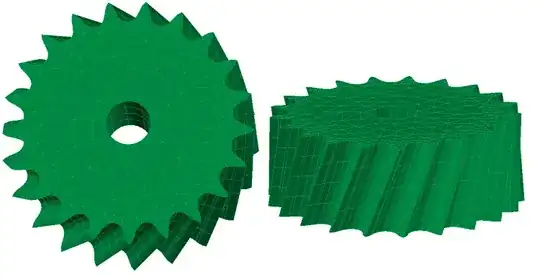I recently entered this post about self-sliding surfaces. They are surfaces that remain invariant under a constant "screw-motion", i.e. the combination of a rotation around an axis and a translation in the same direction (with special cases of no rotation or no translation). Concretely, they are planes, prims, cylindres, surfaces of revolution and generalized helicoidal surfaces, also known as members of a lower Reuleaux pair.
My goal is to detect such surfaces when they are represented by triangulated (gridded) meshes (given the discrete nature of the representation, some accuracy tolerance will be allowed).
One possible approach would be to consider small patches formed by neighboring triangles and somehow estimate the axis location and helix pitch from the vertex coordinates (five unknowns). Then a surface can slide onto itself if the axis and pitch is constant across the whole surface.
Another approach would be to estimate the loci of constant maximum/minimum curvature, which will be helix curves with the same axis and pitch, relatively easy to find from the Frenet-Serret frame.
Any comment or recommendation about these procedures or alternatives ?
